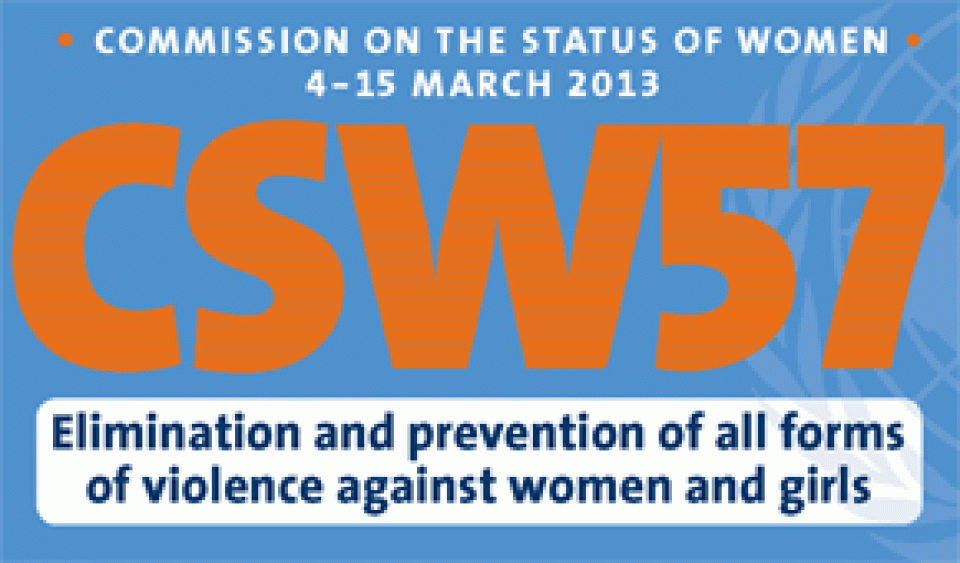
Statement to the CSW 57th Session: Violence against women and information and communications technology
Executive summary
Women’s Rights Programme, Association for Progressive Communications (APC)
What is the issue?
In 2006, the UN Secretary General’s report on violence against women noted that “More inquiry is also needed about the use of technology, such as computers and cell phones, in developing and expanding forms of violence. Evolving and emerging forms of violence need to be named so that they can be recognized and better addressed” (UN Sec Gen Report, In-depth Study on All Forms of VAW, 2006 para. 155). Six years later, despite evidence showing an increase in violations involving technology, very little corresponding recognition of technology-related forms of violence against women by states, inter-governmental institutions, and other actors responsible for ending violence against women. Consequently, it is not prioritised in prevention and response strategies, action plans, budgeting and evidence-based policy making and women and girls who experience these violations have little or no redress.
Since 2006, cyberstalking, online harassment, image manipulation and privacy violations have increasingly become part of intimate-partner violence and sexual harassment, compromising women and girls’ safety online and offline in many countries (Fascendini and Fialova, Voices from Digital Spaces: Technology Related Violence Against Women, Dec 2011).
Laws and policies on violence against women in many countries pre-date the emergence of these violations and they are often excluded in systematic data gathering, monitoring and comprehensive evidence-based policymaking and state accountabilities. This has a knock-on effect on limitations in building capacity of policy makers, enforcement agencies and service providers to respond to these cases. Women and girls who experience violence mediated by information and communication technology (ICT) need recourse to protection and redress. Without clear legal or policy guidelines however, justice agencies and law enforcers have limited capacity to deal with these emerging forms of VAW.
Why should we care?
At the Fourth World Conference on Women in Beijing in 1995, ICTs were recognised as critical for achieving women’s empowerment and gender equality. In 2003, the World Summit on the Information Society (WSIS), reinforced that the development of ICTs will provide opportunities for women’s full and equal participation in all spheres of society.
The internet is a critical global resource that enables individuals to exercise their right to speak, impart opinions, share ideas, build knowledge and access information. By end of 2013, 1.3 billion women are estimated to be on the internet (International Telecommunications Union 2013 ICT Facts and Figures). Access to the internet enables women to participate in the information economy, exercise citizenship rights, get access to health information and services, form communities, engage in formal and informal processes to determine our social, cultural and political life, and more.
Violence against women (VAW) that is mediated by technology is increasingly becoming part of women’s experience of violence and their online interactions. In the same way we face risks offline, in the streets and in our homes, women and girls can face specific dangers and risks on the internet such as online harassment, cyberstalking, privacy invasions with the threat of blackmail, viral ‘rape videos’ and for young women in particular, the distribution of ‘sex videos’ that force survivors to relive the trauma of sexual assault every time it is reposted online, via mobile phone or distributed in other ways. These forms of violence may also be mediated through technology but they cause psychological and emotional harm, reinforce prejudice, damage reputation, cause economic loss and pose barriers to participation in public life. Reporting and responses of these violations are generally limited and the harm and abuse are poorly understood.
VAW that is committed, abetted or aggravated through the use of ICTs and in online spaces are part of the continuum of violence against women and is a significant barrier to women’s and girls’ ability to take advantage of the opportunities that ICT provide for the full realisation of women’s human rights and development.
Recommendations for action
1. Recognition of technology-related forms of VAW
Technology-related forms of violence must be recognised as a form of violence against women and be integrated in monitoring, prevention and response mechanisms, including in public policy and in expanding the implementation of anti-VAW laws. States, inter-governmental institutions and other actors must address technology-related forms of violence against women in their response and prevention efforts.
2. Multi-sectoral prevention and response mechanisms
Holistic, multi-stakeholder and multi-sectoral (primary, secondary and tertiary) prevention and response mechanisms must include private sector technology actors, state telecommunications and communications institutions, and the technical and internet rights communities.
3. Evidence building: Reporting on technology-related forms of VAW
Systematic reporting and monitoring of technology-related forms of VAW must be instituted at all levels. National statistics and indicators on VAW must include a component reporting specifically on ICT-related VAW, so that trends can be monitored and addressed.
4. Capacity building for actors in the criminal justice system
Capacity building for public officials in the areas of education, health, social welfare and justice as well as the judiciary and police must include awareness, understanding and responses to technology-related forms of violence against women. Accountability mechanisms must be established and strengthened to ensure compliance of public officials with laws and regulations that respond to these violations.
5. Engaging intermediaries to build safer online spaces
Internet intermediaries including internet and mobile service providers must be called upon to develop corporate policies, practices and tools that respect women’s rights and condemn online practices that are harmful to women.
Who we are
The Association for Progressive Communication’s mission is to empower and support organizations, social movements and individuals through the use of information and communication technologies for human rights and development and believes gender equality and women’s empowerment are relevant in all aspects of this mission. APC counters discrimination, sexism, exclusion and violence against women in technology design, policy and use.
Contact: Chat Garcia Ramilo, Deputy Executive Director (chat@apcwomen.org) and Jan Moolman, Women’s Rights Project Coordinator (jan@apcwomen.org).
- 9295 views






Add new comment